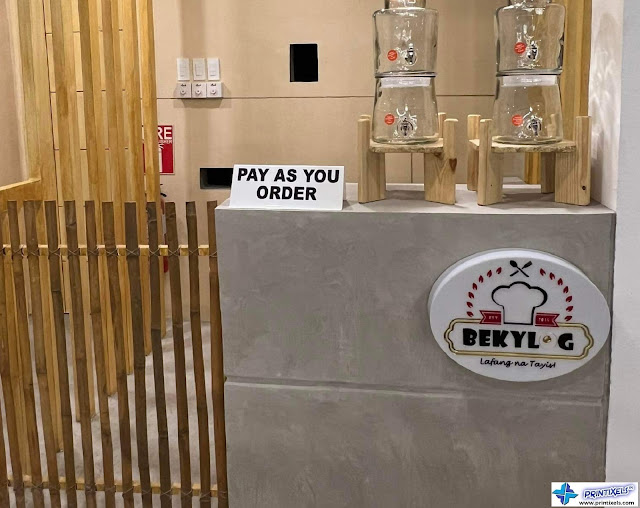
More than just a nameplate, restaurant signage in the Philippines functions as a silent salesman, a visual beacon guiding hungry customers and shaping their perceptions. In a market saturated with diverse food options, from humble carinderias to upscale dining establishments, effective signage is not just an advantage; it's a necessity for survival and growth. It's a critical component of a brand's identity, a visual promise of the experience that awaits within its doors and an essential tool in navigating the unique challenges and opportunities of the Filipino market.
The importance of restaurant signage in the Philippines is multifaceted, extending beyond simple identification. Firstly, it's about visibility. In bustling cities and even in smaller provincial towns, restaurants compete for attention amidst a cacophony of sights and sounds. Brightly lit signs, employing eye-catching colors and fonts, are often the first point of contact, especially for those unfamiliar with the area. This is particularly true in the Philippines, where street traffic is heavy, and the reliance on visual cues is paramount. A well-placed, legible sign can be the difference between a potential customer walking past or entering your establishment.
The importance of restaurant signage in the Philippines is multifaceted, extending beyond simple identification. Firstly, it's about visibility. In bustling cities and even in smaller provincial towns, restaurants compete for attention amidst a cacophony of sights and sounds. Brightly lit signs, employing eye-catching colors and fonts, are often the first point of contact, especially for those unfamiliar with the area. This is particularly true in the Philippines, where street traffic is heavy, and the reliance on visual cues is paramount. A well-placed, legible sign can be the difference between a potential customer walking past or entering your establishment.
Furthermore, in a country with a rich cultural diversity, signage can cater to specific audiences. For instance, Filipino-centric restaurants often utilize designs that incorporate traditional elements like baybayin script or color schemes that evoke a sense of home, thus creating a stronger connection with their target market. In contrast, establishments aiming for a more international appeal might opt for sleek, modern designs. The ability of signage to communicate a restaurant’s unique identity is paramount in a market where food is so deeply intertwined with culture and a strong emotional connection.




The impact of digital signage is also rising in the Philippines, reflecting global trends. LED screens displaying rotating menus, enticing images of dishes, and real-time promotions are becoming increasingly common, particularly in urban areas. This allows restaurants to adapt their messaging dynamically, responding to changing customer preferences and market trends. However, the effectiveness of digital signage hinges on its integration with traditional designs. A balance between the modern and the familiar often resonates best within the Filipino market.
Furthermore, there's a strong preference for tactile experiences. This is why well-designed, physically durable signs made from materials that can withstand the Philippines’ tropical climate are crucial for long term appeal. A restaurant’s sign, just like its food, must be able to weather the elements and remain an attractive presence.
Finally, the importance of customized signage goes hand in hand with navigating the complex local regulatory landscape and ensuring compliance. Local ordinances dictate size, placement, illumination, and even the materials that can be used. Understanding these regulations and obtaining the necessary permits is crucial for avoiding costly fines and ensuring a smooth business operation.
Finally, the importance of customized signage goes hand in hand with navigating the complex local regulatory landscape and ensuring compliance. Local ordinances dictate size, placement, illumination, and even the materials that can be used. Understanding these regulations and obtaining the necessary permits is crucial for avoiding costly fines and ensuring a smooth business operation.
In conclusion, restaurant signage in the Philippines is more than just a functional element; it’s a powerful marketing tool, a reflection of a brand’s identity, and a key to a restaurant's success and longevity. It's about creating visibility, building connections, and ultimately, inviting the community in to experience the unique flavors on offer. In the competitive food scene of the Philippines, a compelling sign is often the first step towards success, a silent salesman that works tirelessly, day and night, to bring more customers through the door.
Related Product:

























0 Comments:
Post a Comment